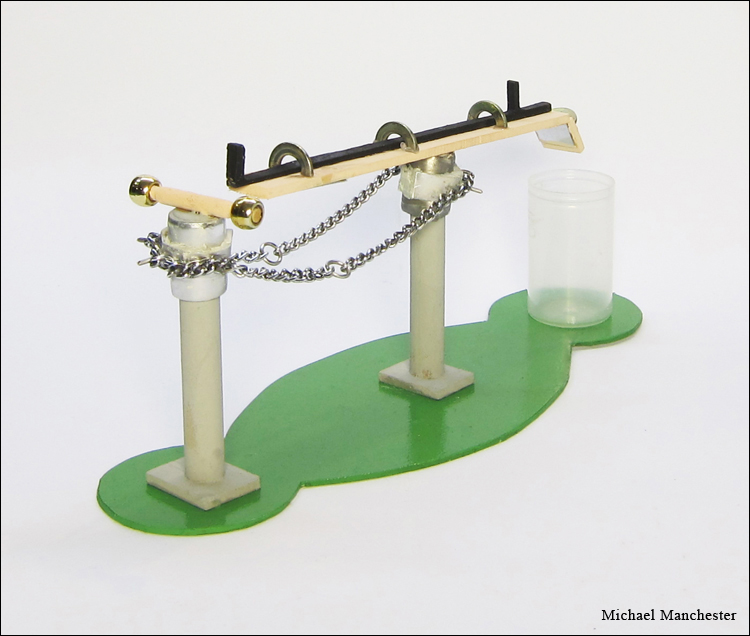City of London Unsolicited Proposal
Educational Interactive Metal Art Park
The City of London relies on various organizations to meet the recreational needs of the public. In the interests of young children, families can visit playground and splash pad equipment in parks, Storybook Gardens and the Children's Museum among other possibilities. As children get older, businesses offer a variety of active pursuits like bowling, trampolines and race tracks, and fields are provided for organized and casual sports. But older children interested in something educational have fewer options.
This proposal seeks to meet the need for educational recreation that engages older children using a model that has already proven successful in the city.

Since its opening in 1958, Storybook Gardens has been a popular destination for locals and tourists with its rides and attractions themed around popular fairy tales and nursery rhymes. This format of a single location that offers a variety of activities can be translated to older children as an educational interactive metal art park similar to miniature golf. The name Steampunk Gardens was chosen as a play on words related to Storybook Gardens to benefit from name recognition.
Some inspiration for the concept came from the Welded Wonders exhibit of metal sculptures at the Zubick scrap yard on Clarke Rd. Created by Fanshawe Fine Art students, the grunge aesthetic that could combine unfinished and powder coated metal would have particular appeal for youth because it looks "cool."
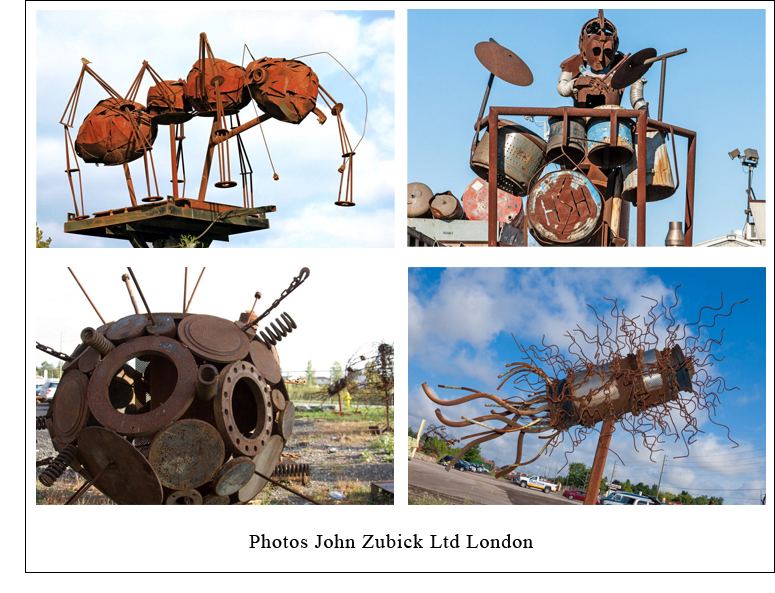
Traditional miniature golf requires players to move the ball around a course using a putter. The proposed grunge golf version has players carry the ball and use it to interact with the course features. The goal of the park is to educate while entertaining. Each aspect of the course would use a different mechanical principle to move the ball the player carries from one point to another. Aside from the hydro required to operate the admission booth and receive payments, no power is required for the course itself. Relying on physically interacting with each feature results in a significant cost savings compared to exhibits that require electricity.
Similar to Storybook Gardens, this would be owned and operated by the City of London and an admission would be required. The fee for grunge golf would be related to the number of balls rented to play the course. A parent that accompanies a child but doesn't want a ball wouldn't pay.
A diorama has been created to illustrate the concept. Different course features have been represented. More would be added if the project was implemented with the goal of having 18 different holes to play that incorporate a variety of physical properties including gears, magnets, gravity, momentum and kinetic energy.
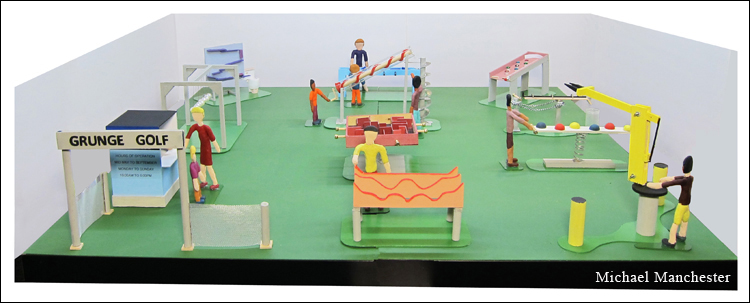
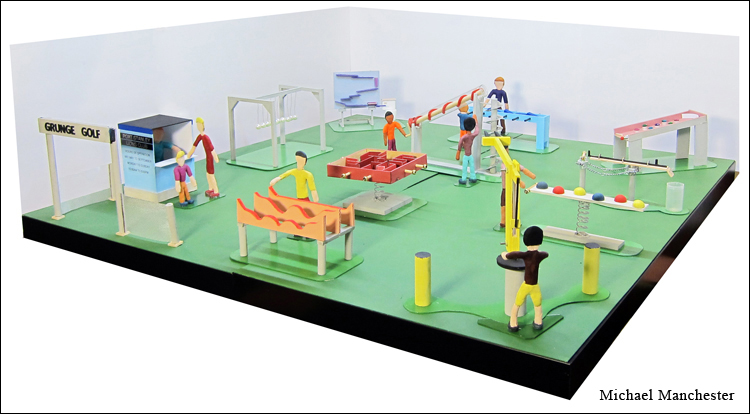
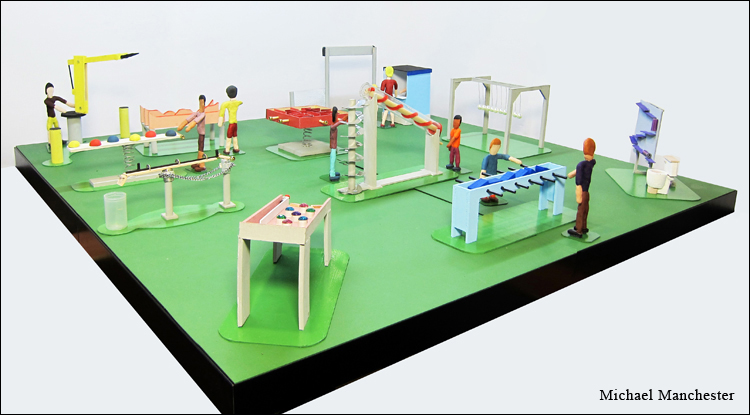
Hole #1 - Archimedes Screw
The Archimedes screw was invented to move water from a lower elevation to a higher elevation. But it can also move objects. Players would place their ball onto the conveyor, turn the handles and move the ball to the top. It would fall out onto a ramp and roll down to the bottom.
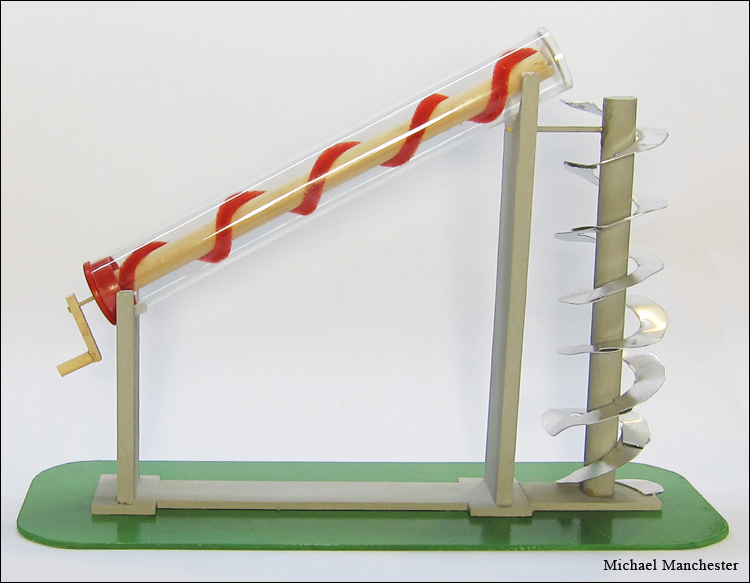
Hole #2 - Maze
A large maze would be mounted on an industrial heavy load spring. Players would place their ball at the start of the maze and use the handles to lift and lower the maze causing the ball to roll and navigate the course to the finish. The walls of the maze could be magnetic or screwed in place allowing the course to change on a regular basis.
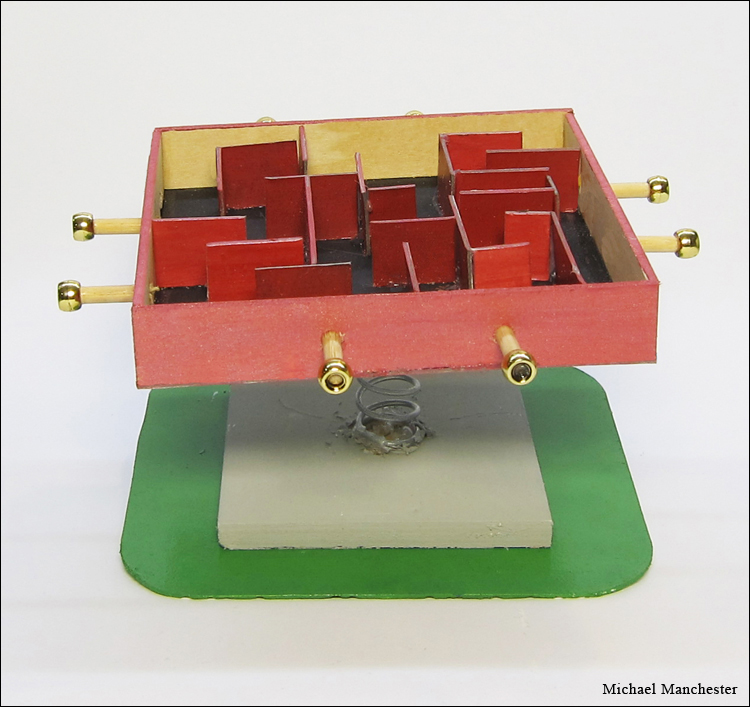
Hole #3 - Newton's Cradle
A life-sized version of the tabletop device that demonstrates the conservation of momentum and energy with swinging spheres. A sling would allow players to place the ball at either end of the cradle. When one ball is pulled away and released, it hits another ball and the energy is transferred to the end causing the last ball to bounce.
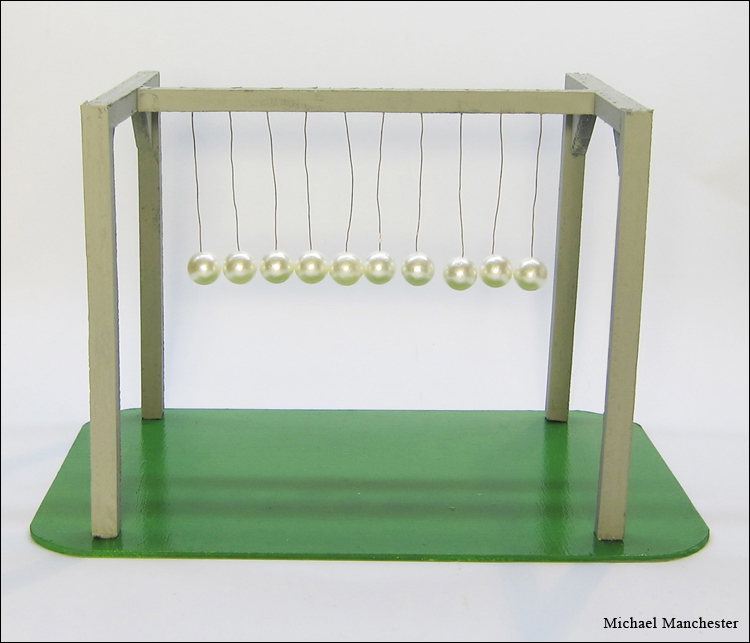
Hole #4 - Rube Goldberg Device
A metallic wall would initially be empty. Metallic platforms and tubes would be available in a bin. The goal is to attach them in various patterns so that a ball placed at the top would travel to the bottom in the most complicated manner and drop into the toilet at the end.
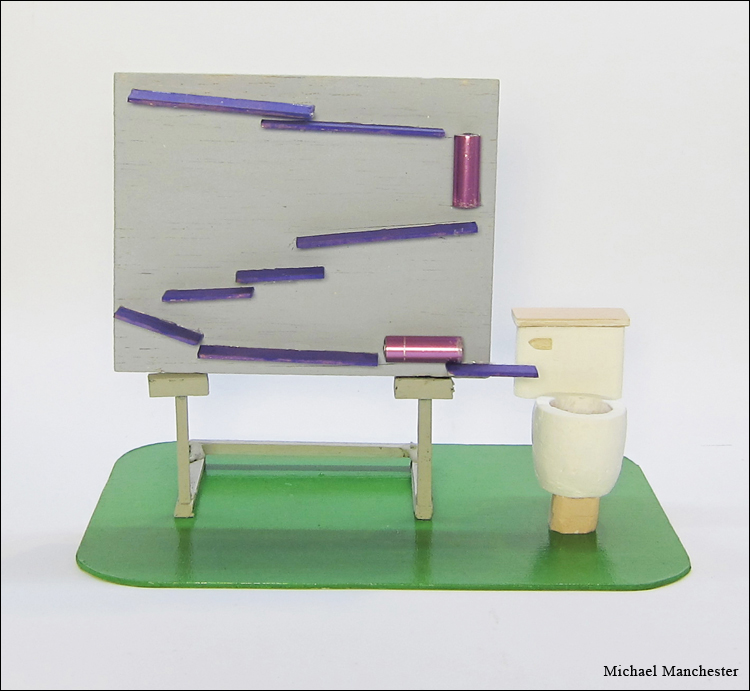
Hole #5 - Making Momentum
The ball would be placed on the first ramp. The handles allow the ramp to pivot. Players create momentum by using the handles to roll the ball to the next ramp. This continues until they reach the other end.
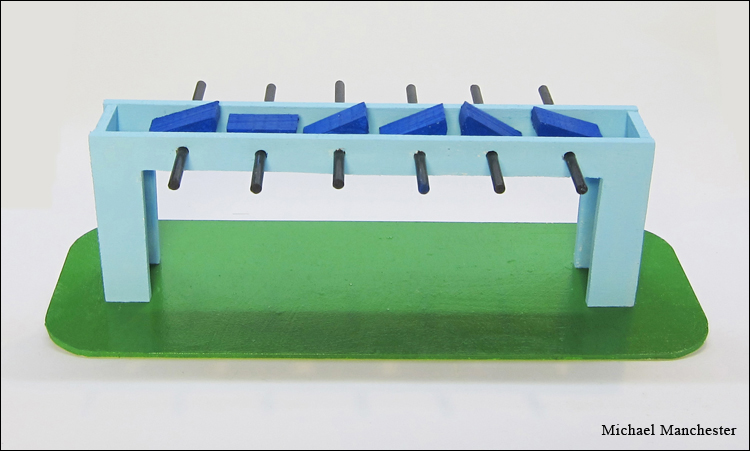
Hole #6 - Claw Game
A ball is placed on one stand. The gripper is rotated to position the claws over the ball. Levers are pulled to grip the ball, rotate the gripper over to the second stand and then levers are released to drop the ball. This allows players to explore how hydraulic and pneumatic power systems work.
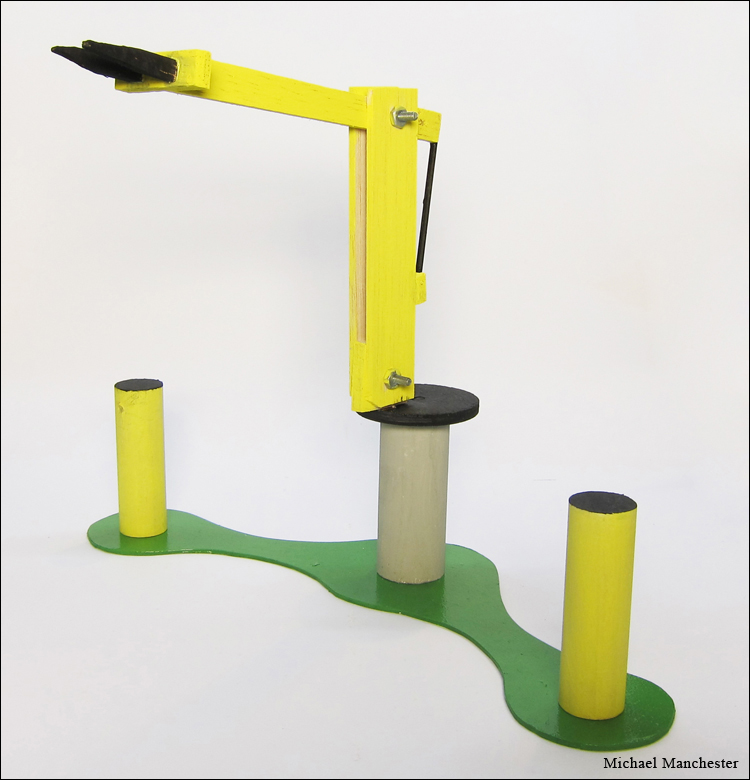
Hole #7 - Ziz Zag
A platform is mounted on an industrial spring. Players place their ball at the front and use the handles to lift and twist the platform to maneuver the ball around the obstacles to the end. Lacking any barriers on either side, it is very easy for the ball to roll off the platform testing players' skill.
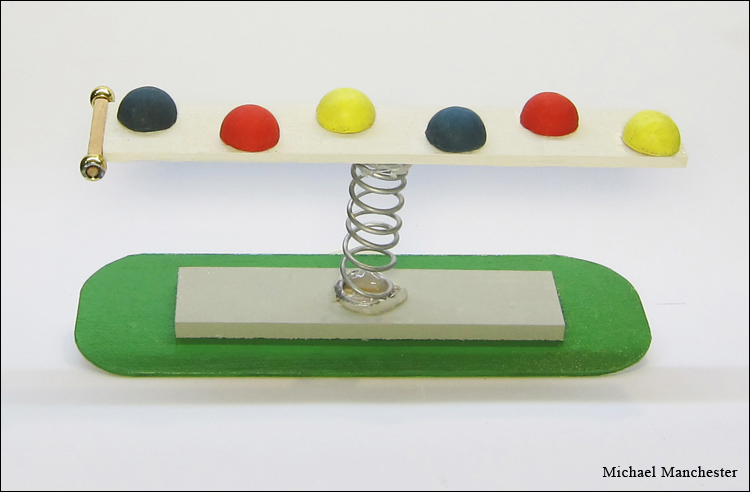
Hole #8 - High Low Tracks
A common belief is that the fastest route between two points is a straight line. But this isn't always the case. High and low tracks demonstrate that a very winding path can actually be faster than a simpler route by creating momentum to propel the ball. Players compete with one another to see whose ball arrives at the end first.

Hole #9 - Pinball Game
An entirely mechanical version of the arcade classic. Players place their ball in the launch ramp and propel the ball using the spring. As the ball strikes objects it will make a different sound based on the size and type of material. Players can use the paddles at the bottom to launch the ball back onto the board.
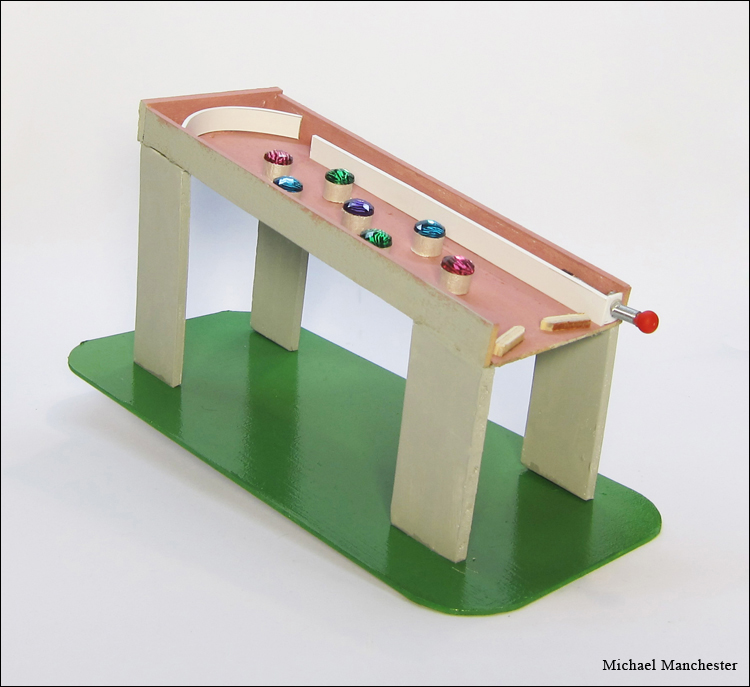
Hole #10 - The Twist
A long platform is connected by a chain to a mechanism that causes it to rotate. Players place their ball at one end of the platform and use the handles to rotate it so the ball is positioned above the bucket. A rod on top of the platform is pulled and this releases a hinged piece that drops the ball.
